News and Highlights
This is a list of past iUTAH EPSCoR news from 2012 to 2018.
January 8, 2015
Breakthroughs in Aquatic Microbiology Advance iUTAH's Research
Streams are teeming with many different kinds of bacteria, but until recently the technology has not existed to let scientists understand how the species composition of microbial communities is linked to water quality. Researcher Zachary Aanderud and his PhD student, Erin Jones, are studying the importance of bacteria in stream environments and their role in water quality for iUTAH. Breakthroughs in DNA sequencing technique allow iUTAH to be part of a new wave of aquatic ecology studies now taking place. Previously scientists could describe stream bacterial activity only in terms of total carbon – basically measuring the amount of bacteria, but not which kinds are present. Identifying the species present is useful because different types of bacteria are able to create different biochemical compounds, including ones that are considered pollutants. We now are able to analyze a stream's capacity to produce any number of pollutants, based on molecular activity represented in bacterial genomes.
Their first study involved collecting water samples from high elevation-pristine sites to low elevation-urbanized sites in the Logan, Red Butte, and Provo watersheds. In the past, their lab had measured levels of a single bacterium, E. coli, at these sites, and recorded a definite increase in this species from high elevation to low elevation. The more urbanized sites showed a decrease in bacterial diversity – there were fewer species, and certain species tend to grow more dominant as they looked further downstream. Upon closer examination, the shift in bacterial community happened ABOVE heavy urbanization in all three watersheds. Instead, the shift corresponded to sites immediately downstream of dams (First Dam in Logan, Red Butte Reservoir in Red Butte, and Jordanelle Reservoir in Provo). This change occurred before there were significant changes in E. coli levels.
This data, paired with water chemistry data collected by iUTAH researchers, will give huge insights to how bacteria communities interact with other water quality variables. By collecting samples during different seasons of the year we can see if these trends are consistent across different weather and flow patterns.
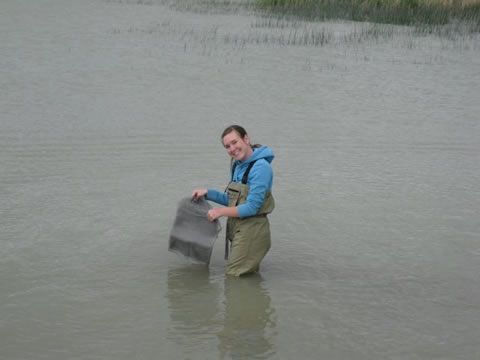
Erin Jones sampling Utah Lake
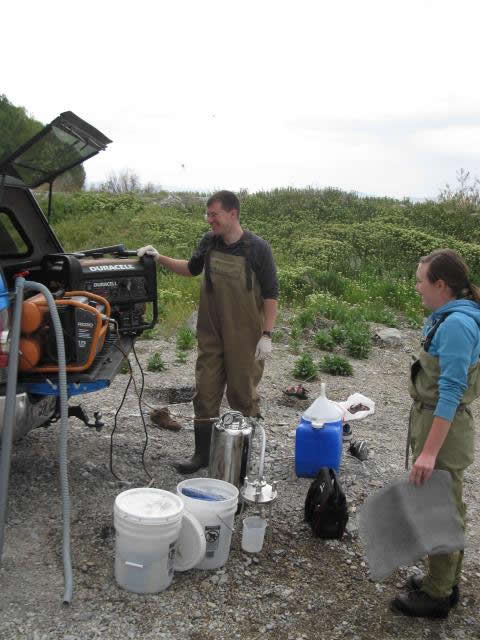
Filtering samples with fellow graduate student Tylan Magnusson
January 6, 2015
iUTAH partners with the Salt Lake County Watershed Symposium
iUTAH was pleased to partner with Salt Lake County for their 8th annual Watershed Symposium held from November 19-21 in West Valley City. More than 450 attendees heard from water quality experts, policy makers, environmental advocates, industry representatives, and researchers over three days of presentations, panel discussions, and field trips. Now in its third year, this collaboration provides an important opportunity for critical discussions about Utah’s water future., iUTAH was highly involved with events spanning the GAMUT from an informative booth and well-received keynote address to well-attended panel discussions and breakout sessions. All this was capped off by an iUTAH-led field trip on the final day of the symposium.
Michelle Baker, iUTAH Project Director, gave a keynote address on science for sustainable water systems in Utah. Following her presentation, iUTAH hosted a panel discussion featuring researchers from several of our RFAs, including Zach Aanderud (BYU), Jeff Horsburgh (USU), and Doug Jackson-Smith (USU). iUTAH was also involved in multiple symposium sessions, including an exciting panel on water issues from a city planning perspective that featured iUTAH participants from RFA3 Sarah Hinners, Phillip Stoker, Martin Buchert and Erfan Goharian. The final event for the Watershed Symposium was an iUTAH field trip to the Red Butte Creek Watershed led by iUtah participant and Distinguished Professor Jim Ehleringer, with the help of Alison Chan, Dave Eiriksson, Steven Hall, and Christine Pomeroy.
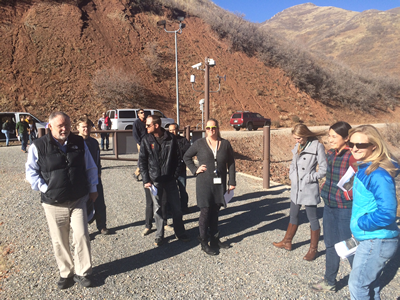
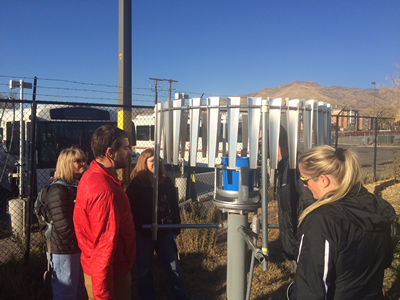
A Successful All Hands Meeting
Following the Salt Lake County Watershed Symposium, iUTAH held its Fall All Hands meeting on Friday November 21st in West Valley City’s Utah Cultural Celebration Center. Project Director Michelle Baker welcomed over 70 iUTAH participants to the meeting. During the opening session, iUTAH participants provided updates on education outreach and diversity, data collection plans, and research highlights. A highlight for everybody was RFA3‘s introduction of the re-envisioned iBUGI (biogeochemistry of urban green infrastructure) and iVL (innovative Visualization Lab) facilities.
Following these important updates, attendees were invited to participate in a number of breakout sessions that provided a welcoming and productive forum for the sharing and further development of ideas and initiatives.
Lunch was a working affair: John Lin from the University of Utah provided those in attendance with an overview of our current understanding of the exchange of greenhouse gases and pollutants between land and atmosphere, using atmospheric modeling of the Salt Lake City rail system as a case study. Even though the meeting officially adjourned after this fascinating presentation, many participants lingered to network and further discuss their research well into the afternoon, making this another successful All Hands Meeting for iUTAH.
We would like to again thank everyone who attended or participated in both the Salt Lake County Watershed Symposium and the All Hands Meeting!
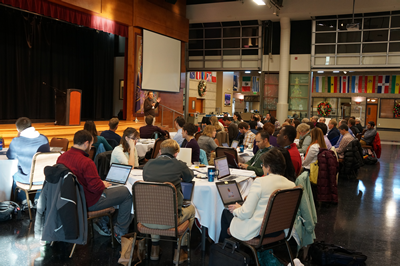
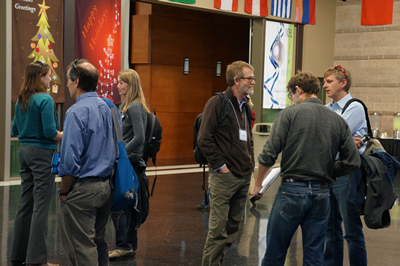
December 23, 2014
Graduate Student Spotlight: Trinity Stout, USU

Trinity is a first year graduate student under Dr. Bethany Neilson in Civil and Environmental Engineering at Utah State University. His research interests include understanding the spatial and temporal variability in groundwater/surface water interactions. Trinity grew up on a small farm in the southern Utah town of Hurricane, where he saw first-hand the importance of water use and conservation. He later developed an interest in research while completing his undergraduate degree at Utah State, where he chose to join iUTAH and become part of a larger research effort focused on water sustainability. When he is not working or studying, Trinity enjoys fly fishing and hiking with his wife, or working on projects around the house.
December 22, 2014
Meet the New Office Assistant, Lauren Kelley

We are pleased to announce, Lauren Kelley as our new Office Assistant! She moved to Logan from Salt Lake City a year and a half ago to begin her Bachelor’s program. She is majoring in Wildlife Sciences at Utah State University. Her love of the outdoors began at a young age growing up in the Midwest surrounded by the urban prairies. Out of all the paces she has lived, Utah is where she feels the most at home. She has always been a bit of an explorer and loves to be outside enjoying the scenery or watching the local wildlife. In her spare time she also enjoys reading, baking, and taking care of her four pets. Since Lauren is a Natural Resources student, she is excited to work for iUtah and help reinforce the importance of water conservation to the population around the state.
December 16, 2014
Graduate Student Spotlight: Michelle Barnes, USU

Michelle Barnes grew up in the Reno-Tahoe, Nevada area. Her love of the outdoors was influential in pursuing her degrees in Environmental Engineering. Michelle received, a Bachelor’s degree from the University of Nevada, Reno and a Master’s degree from the University of Alaska, Fairbanks. While in Alaska, she investigated groundwater dynamics in degrading, discontinuous permafrost and the impacts on contaminant transport. Michelle is now pursuing a PhD at Utah State University under the direction of Dr. Bethany Neilson. She is eager to diversify her skill set by studying groundwater/surface water interactions as part of RFA1.
December 9, 2014
Graduate Student Spotlight: Josh Walston, USU
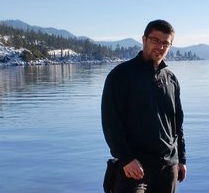
Originally from southern California, Josh moved to Nevada to attend the University of Nevada, Reno where he received a Bachelor’s degree in Atmospheric Sciences with a minor in Mathematics, and was the president of the American Meteorological Society Student Chapter. Josh then attended the University of Alaska, Fairbanks, to further pursue his passion of the atmospheric sciences and receive his Master’s degree. He is currently a PhD student in Climate Science in both the Watershed Sciences, Plants, Soils and Climate departments at Utah Sate University under the supervision of Dr. Jiming Jin. Josh’s research focuses primarily on using downscaling techniques in hydroclimatic modeling to improve climate projections over Utah and the inter-mountain west. Josh enjoys spending his free time in the outdoors: snowboarding, fishing, camping, hiking, mountain biking and off-roading in his Jeep. He is new to the Utah area and is excited to explore the endless outdoor possibilities it has to offer.


